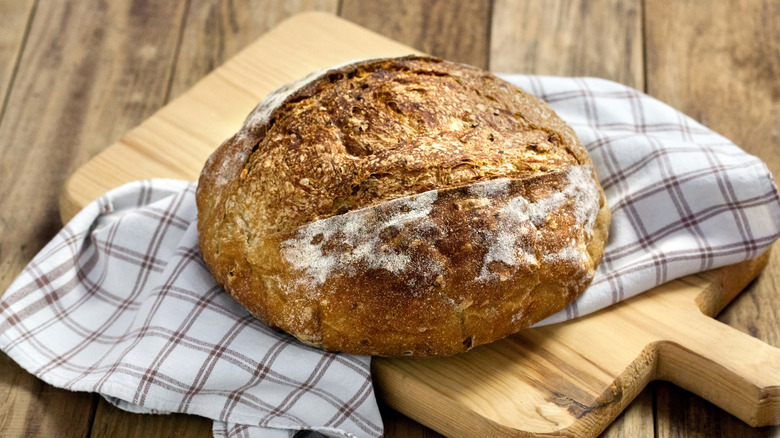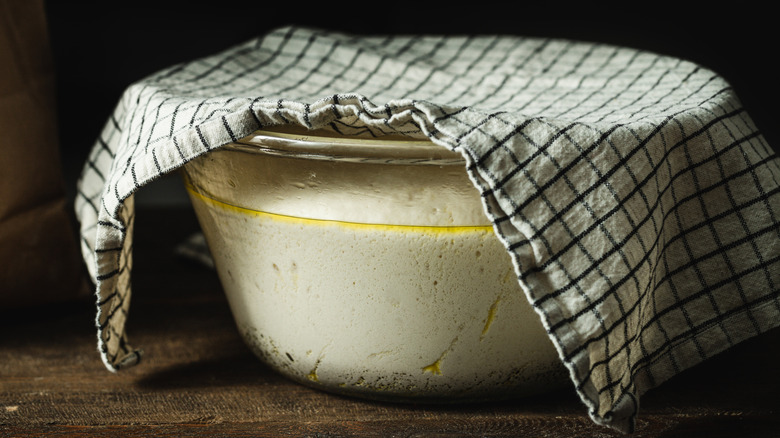The Key To Successful Bread Making Is Patience
While baking your own bread is incredibly satisfying, it can be daunting for beginners. There are so many different steps to follow, it's time-consuming, and it can take several attempts to get it right. To find out if it's possible to simplify or speed up the bread-making process, Food Republic consulted chef and cookbook author Jake Cohen for some expert advice.
Unfortunately, there are no quick shortcuts, according to Cohen, whose new TV series "Jake Makes It Easy" premieres on Monday, October 28, 2024, as part of A+E Networks' Home.Made.Nation on FYI. "The number one ingredient missing from most kitchens is patience," the chef explained. "There is no get rich quick scheme for bread baking!" However, there are some tips that can help you get the best results every time — and this starts with being precise about the ingredients and the method.
Using too much flour is a mistake that can make homemade bread fall apart, so the right amount is crucial. "Use a scale for consistency and accuracy in measuring flour," advised Cohen. Don't be tempted to use cups to measure, as the volume can vary depending on how densely the flour is packed and how it is scooped. Measuring by weight is the only way to guarantee you're getting the exact amount you need. And if you really want a bakery-worthy result, try toasting the flour for a richer, nuttier flavor.
Let your dough proof properly for better bread
Proofing, one of the most time-consuming parts of making bread, is also one of the most important, so don't be tempted to rush it. "Make sure you're letting your dough proof properly," advised Jake Cohen. After the dough has been shaped and before it is baked, this process allows the dough to expand as the yeast is activated. It's what helps the bread rise beautifully in the oven — and, once again, patience is key.
The best temperature for proofing dough is around 75 to 80 degrees Fahrenheit, and how long it takes for the dough to roughly double in size depends on a number of factors. Use either a glass bowl covered with a damp towel, or a bread proofing basket to help the dough keep its shape. Use the poke test to check your dough is proofed — it's a simple way to confirm it has just the right level of springiness.
Alternatively, if you really do lack the time or patience for baking a traditional loaf, you can try something more straightforward to start with. Remove the yeast from the equation altogether with a simple flatbread recipe that can be on the table in under half an hour. Or, perhaps try making fluffy bread rolls in a slow cooker; they rise as they cook, so there's less waiting time involved.


